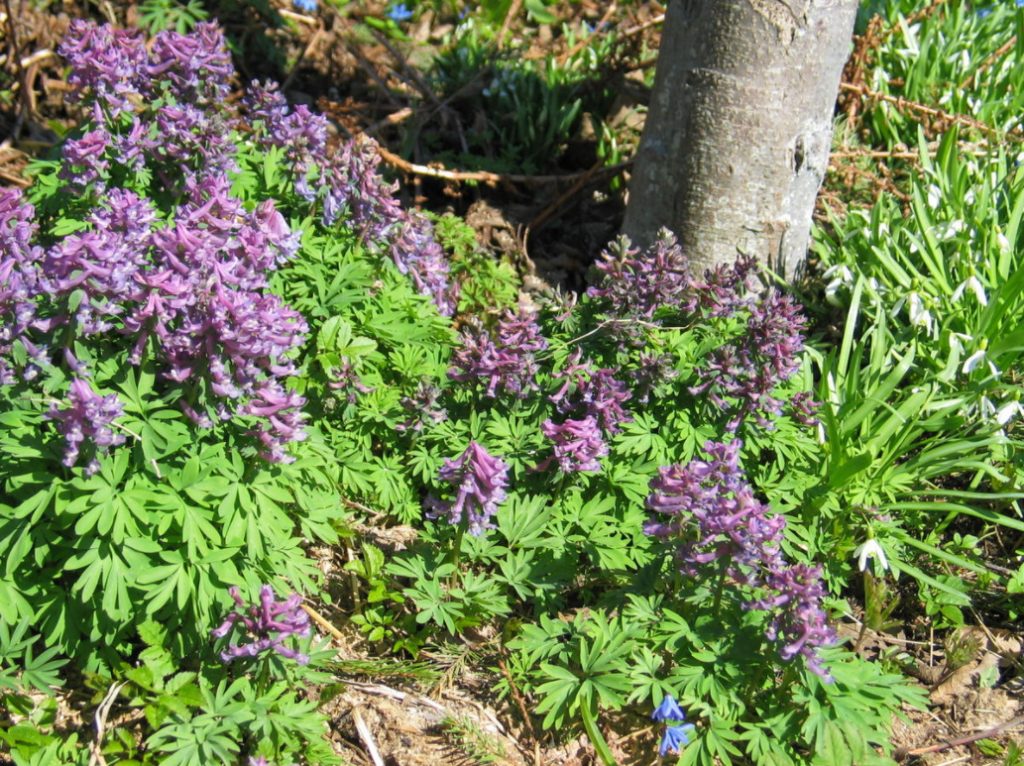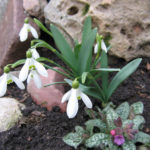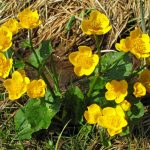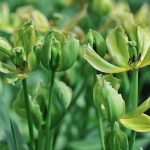Corydalis belongs to the family Fumariaceae. Like a princess imprisoned in a dungeon, she languishes underground for ten months and only for a short time — in the spring, soon after the snow melts — comes to the surface to greet the sun, shine with her delicate beauty and delicate fragrance, and then hide again for a long time underground, until the next spring, until the April sun…
Corydalis – herbaceous perennial tuberous or rhizomatous low-growing ephemeroid forest plants of the northern and temperate zones. There are about 100 species of Corydalis and many garden forms.
The leaves are petiolate, double-, triple-cut, light green, tender. The stems are erect. The flowers are yellow, pink-purple, blue-purple, bluish; with a spur formed by the upper outer petal; collected in terminal simple racemes. The fruit is a bicuspid single-nest pod.
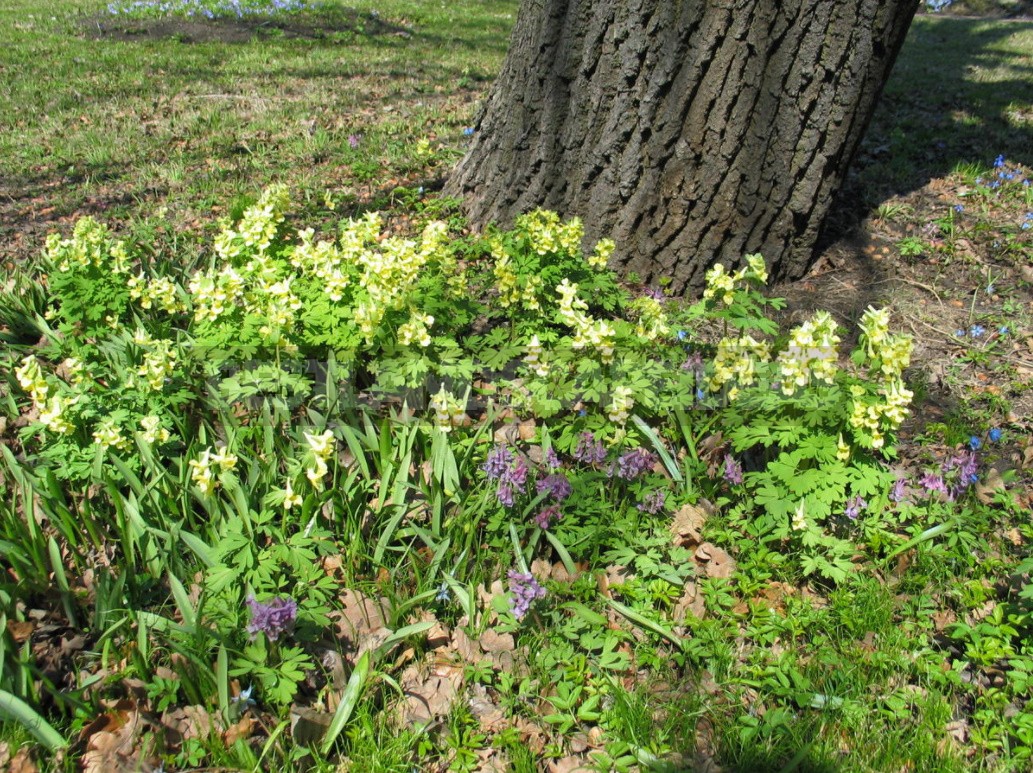
Corydalis – plants are hardy and do not require shelter for the winter. They reproduce vegetatively (by daughter nodules) and seeds, which quickly lose germination when dried. Tubers easily tolerate drought while in the soil. These flowers should be grown on fertile, rich soils. The nodules are planted shallowly (7-10 cm), they do not need watering. Seeds are sown in loose, airy, moderately moist soil immediately after harvesting, as they quickly lose germination.
Planting of plants with tubers is carried out in mid-summer or autumn. They are placed in rockeries and rock gardens, on lawns – always in groups. Corydalis are shade-tolerant, these are magnificent flowers for shady places – under shrubs and trees. Planted in large groups mixed with Scilla, Erythronium, Galanthus, which often bloom at the same time, they create a magnificent variegated carpet. The best choice for creating such a carpet would be C. bracteata.
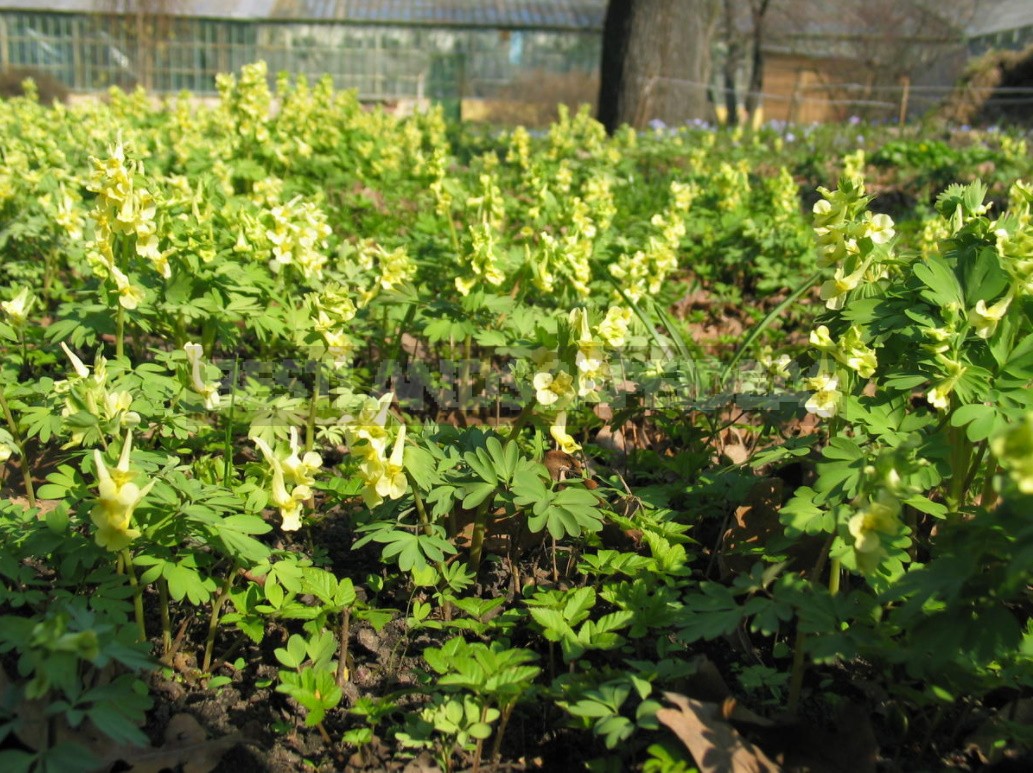
To limit the weeding of Corydalis (to limit it, since their seeds ripen already 3 weeks after the beginning of flowering), you need to cut off the peduncles immediately after the last flower in the brush has withered.
Types and varieties
C. nobilis is a plant of Western Siberia and Central Asia, up to 35 cm tall. The leaves are long-stemmed, three-pronged. The flowers are yellow-orange or yellow-brown, about 2 cm long, collected in dense short brushes. Blooms in April-May for 20-25 days. He’s sobbing.

C. ochroleuca is a plant of southern Europe, grows up to 20-30 cm tall. The tuber is fleshy. The leaves are long-stemmed, double-, three-pinnate. A lot of stems are formed. The flowers are small, light yellow, yellow.
C. bushii is common in moist forest clearings. The plant is 10-25 cm tall with pinkish-brownish flowers. Blooms in May-June.
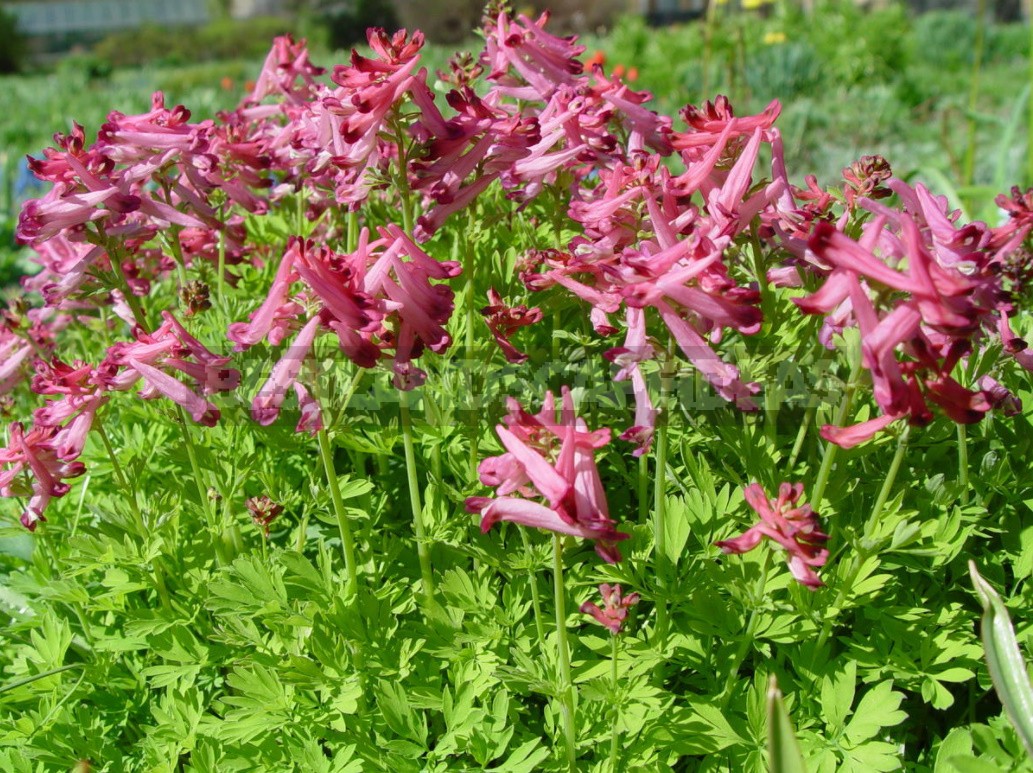
C. lutea is a plant of the southern part of Europe. It has a fleshy root; it grows up to 20-30 cm tall. The leaves are bright green, the stem is branched. The flowers are bright, light yellow or orange-yellow. The growing season is stretched.
C. bracteata is a plant of forests of Western and Eastern Siberia, Mongolia; 10-20 cm tall. Blooms profusely, lemon-yellow flowers, bright. The growing season is 30-45 days. Blooms in April-May. Actively gives self-seeding, weeds.
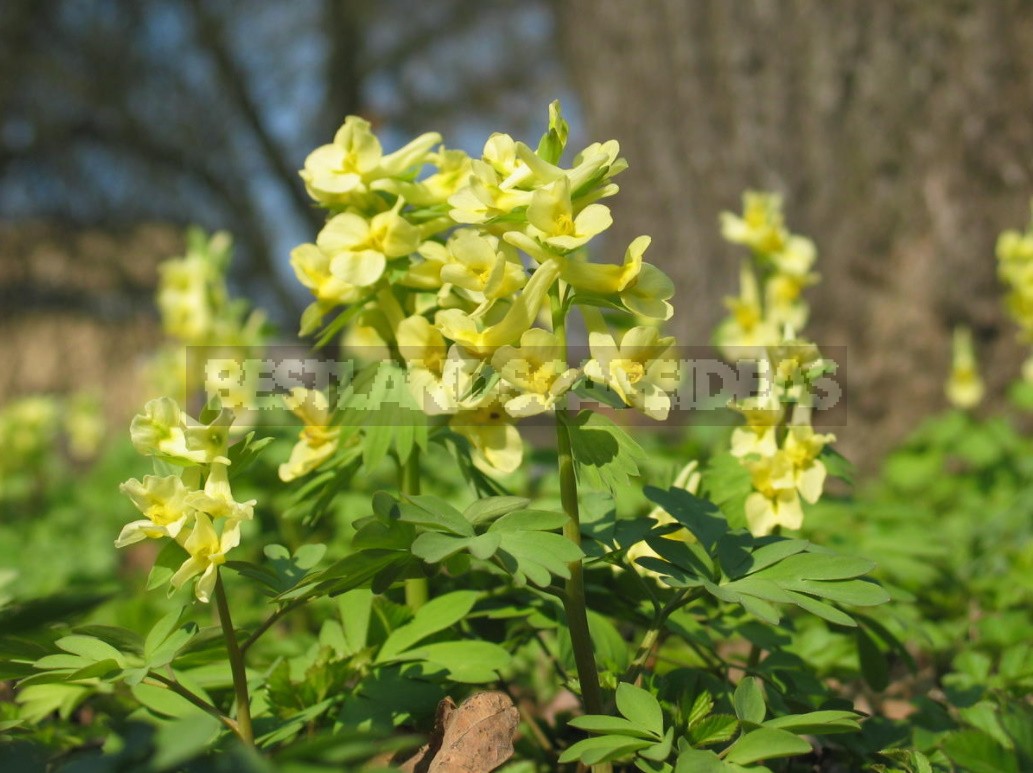
C. bulbosa syn. C. hallerii is a widespread European species, plants reach 20-25 cm in height. The leaves are long-stemmed, double-, tridentate, bright salad-green in color. The flowers are pink-purple.
C. marschalliana is a plant of the Caucasus, Iran, Asia Minor. Height from 20 to 35 cm, with yellowish, pinkish flowers; short growing season. It weeds, actively propagating by seeds. Blooms in April-May.
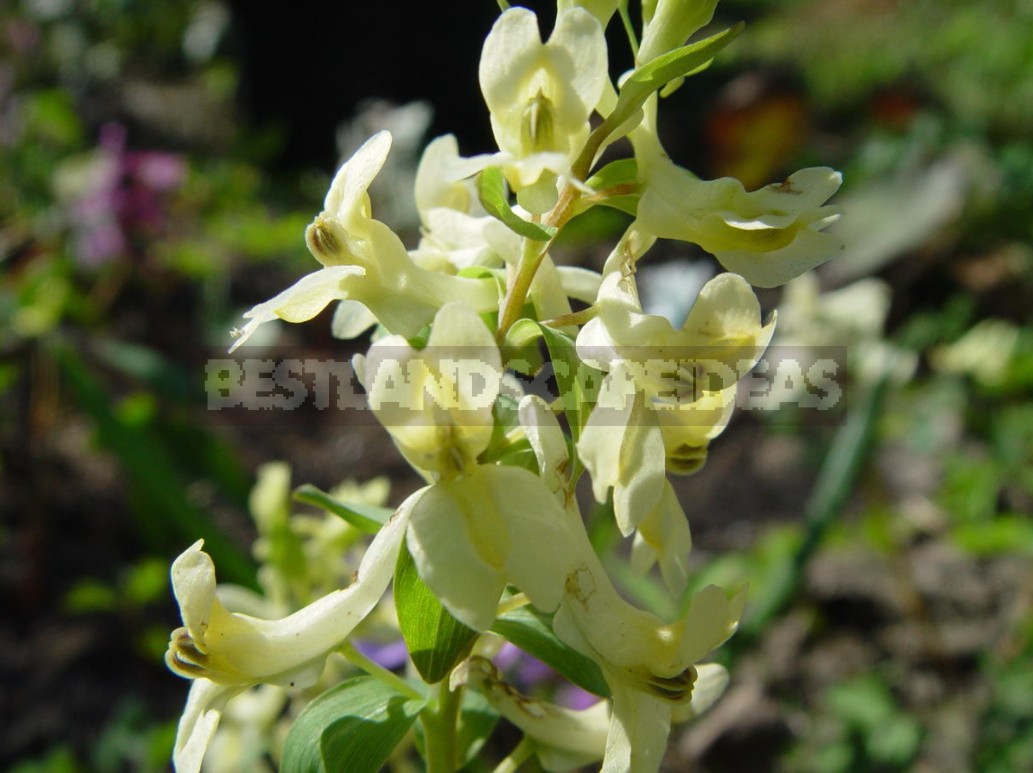
C. ambigua is a plant of the Far East, Japan and China, up to 25 cm tall. The flowers are blue-blue. Blooms in April-May. Gives self-seeding.
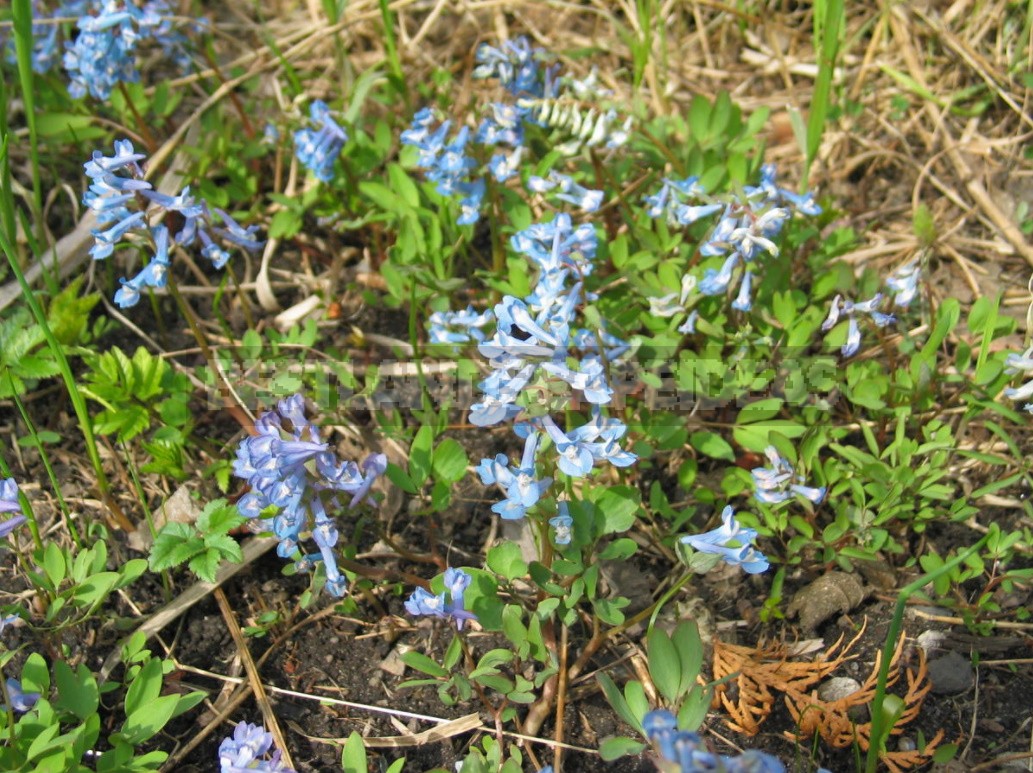
C. paczoskii is a plant of the Black Sea region, 15-30 cm tall, with pink-brown or purple-pink flowers with an elongated spur. Blooms in April-May. He’s sobbing.
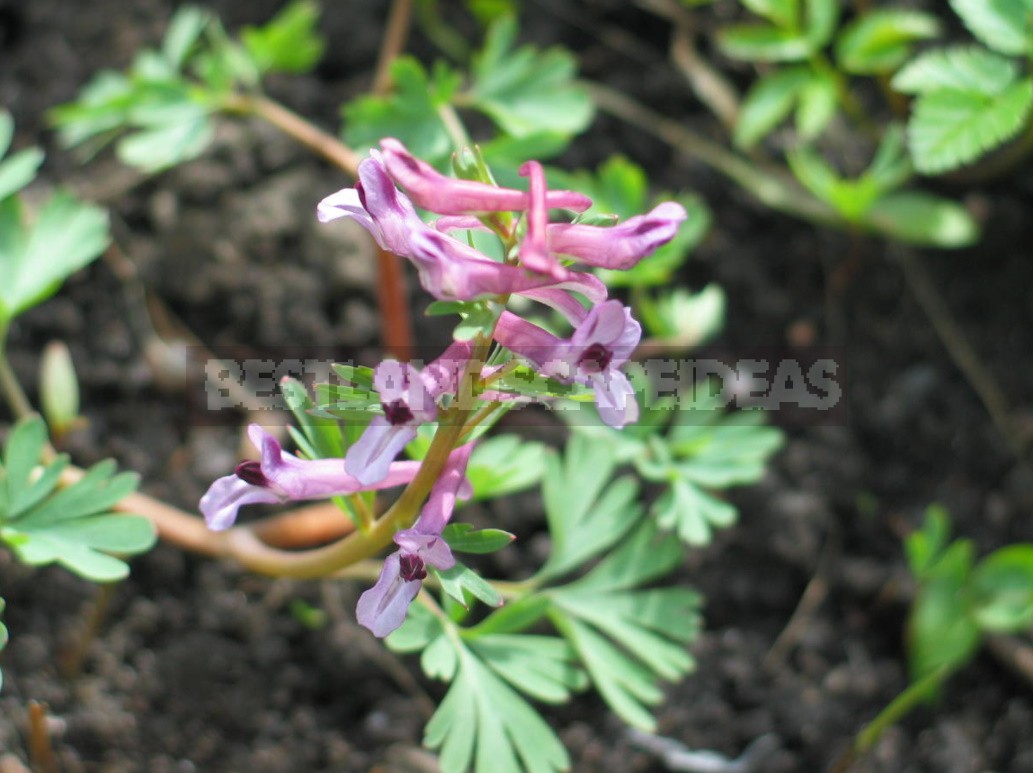
C. solida is a plant of Central and Asia Minor, from 10 to 20 cm tall. The flowers are pink-purple, 1.5-2 cm long, collected in relatively dense brushes. Blooms profusely in April-May for 20-25 days.
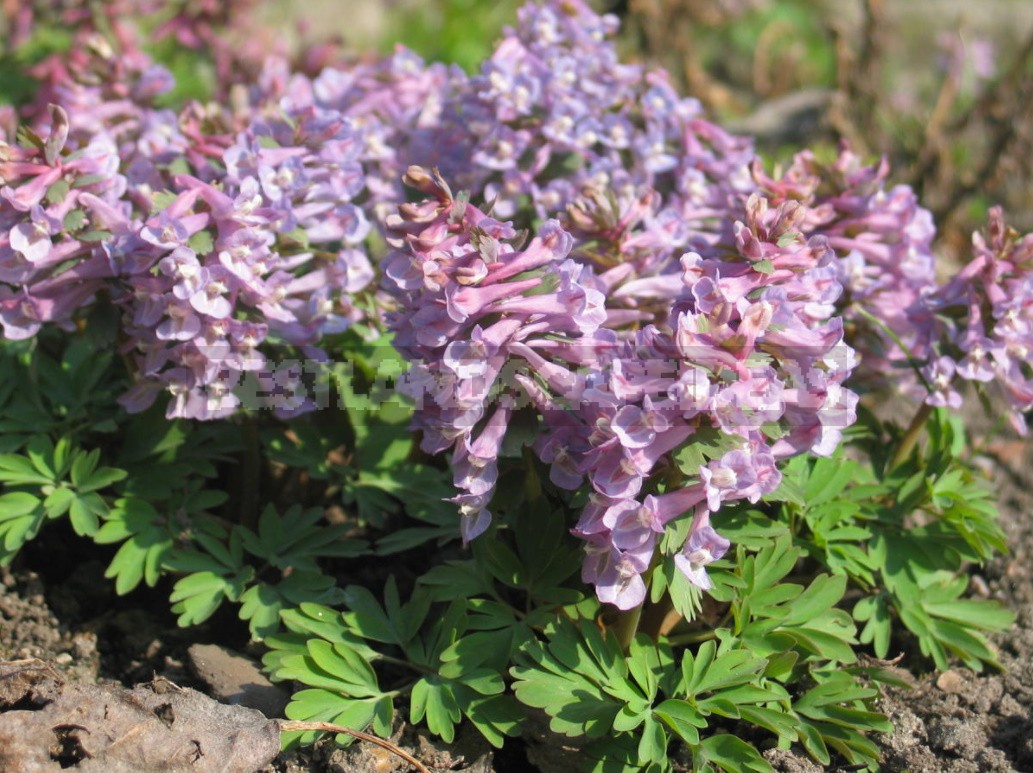
The variety C. solida ‘George Baker’ is known – plants with a height of 10-12 (up to 25) cm, with red flowers, during active flowering form a group up to 20 cm in diameter.
C. cava syn. C. bulbosa; C. tuberosa; Fumaria cava is a plant of broad-leaved and spruce-broad-leaved forests of Europe, 15-30 cm tall. The flowers are purple-purple or yellow-white.
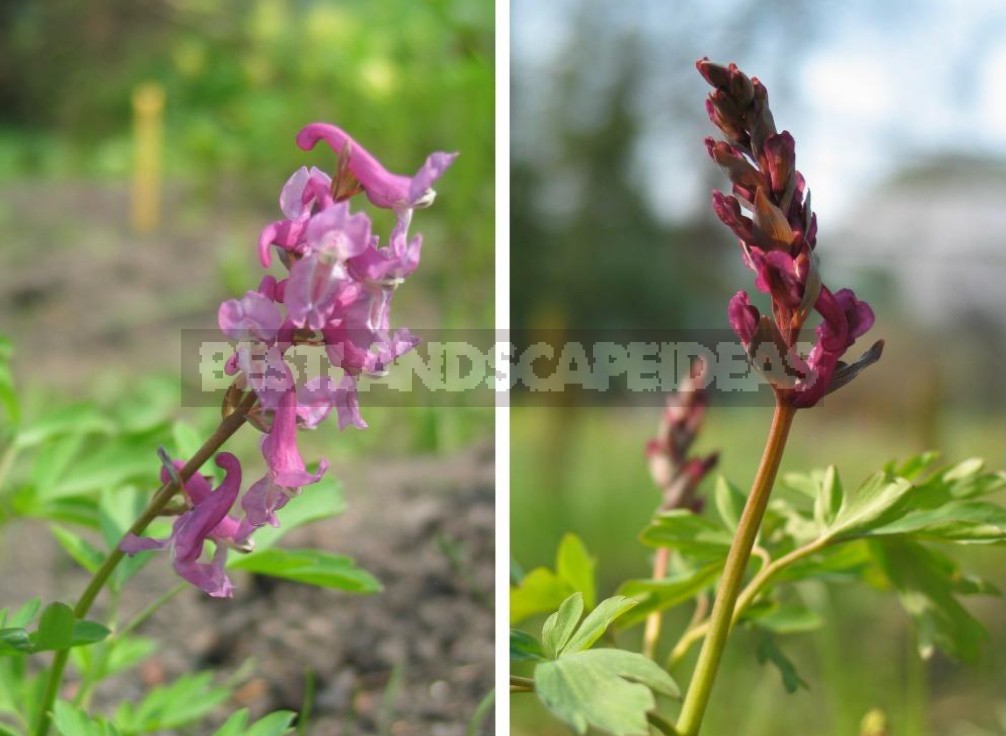
C. intermedia is a plant 8-15 cm tall with an almost spherical tuber. The leaves are twice, three times divided into narrow slices. The flower brush is loose (with 1-8 (10) flowers). The flowers are pink-purple, purple-gray.
C. cheilanthifolia is a plant of western China, grows up to 25-30 cm tall. It has a fleshy root. The lower leaves are double-, triple-intersected, look very delicate. In culture, it is short-lived, but it is easily renewed by seeds. For the winter in the northern regions, it is recommended to cover the planting with lapnik.
C. angustifolia is distributed in the southern part of Europe. The plants are 10-20 cm tall, the flowers are light yellow. Blooms in April (May).
